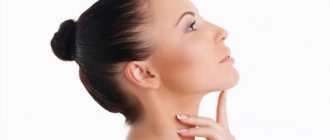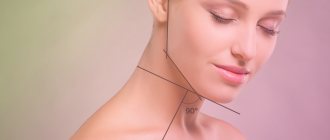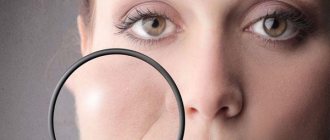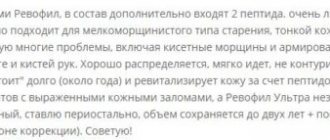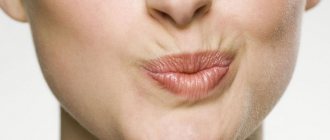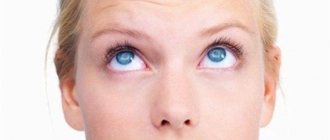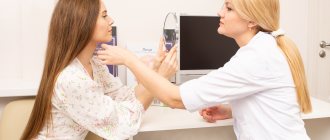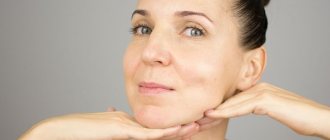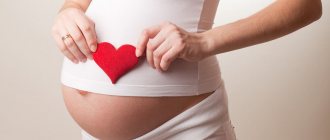How to solve problems yourself
To visually correct nasolabial folds at home, you should take the advice of a makeup artist on how to apply makeup correctly. In this case, the anatomical structure of the nasolabial zone will remain the same, but its visual perception will change.
Anti-aging care products (creams, tonics, foams, face masks, scrubs) will help to slightly tighten nasolabial wrinkles. They contain hyaluronic acid, collagen, antioxidants, vitamins, oils, and moisturizing components.
To prevent and smooth out facial wrinkles, massage and special exercises are used. Folk remedies include the use of herbal decoctions and compresses with plant pulp. Unfortunately, the result after applying the listed correction methods is neither pronounced nor durable.
Fortune telling by philtrum
Like other facial features, the philtrum is an object of study in physiognomy and magic. The shape of the mouth also depends on its shape, so predictors often use information about the philtrum in their predictions.
What myths are associated with the philtrum?
There is a legend that says that the philtrum is the mark of an angel's finger. When he brings a child down from heaven to earth before birth, he puts his finger to the baby's mouth. This is done so that he forgets everything he saw before birth - heaven, angels, his past lives and another world. This allows a person to live his life in blissful ignorance of his past mistakes. Screenwriter Jaco Van Doormael reflected this legend in the film “Mr. Nobody” (2009).
There are also references to the philtrum in Judaism. In the treatise Nida of the Babylonian Talmud it is said that angels teach the baby Torah while still in the womb. To erase the memories, the angel lightly hits the baby on the lips. The Jew recreates this unique part of the Torah, learned in the womb, in his memory throughout his life.
Cosmetological correction methods
To more effectively resolve the issue, cosmetologists have developed special procedures. These include contour plastic surgery (injection of fillers), botulinum therapy, biorevitalization, SMAS lifting, 3D volumization, thread lifting, and hardware techniques.
Individual consultation
Contour plastic surgery (fillers)
It is the main and most popular way to fix the problem. Hyaluronic acid is most often used as a filler.
Fillers are injected into the nasolabial folds subcutaneously using injections. The drug has a gel-like structure. After injection of hyaluronic acid, the nasolabial folds are uniformly filled. As a result, they level out and become less deep.
In addition to smoothing wrinkles, hyaluronic acid has a beneficial effect on the physiological condition of the skin. The skin becomes more elastic and elastic, its ability to regenerate (recovery) increases, metabolism improves, and age-related changes decrease.
Over time, hyaluronic acid is absorbed. The rejuvenating result after such exposure lasts on average 6-12 months. After this, the procedure can be repeated again.
Contour plastic surgery does not require special rehabilitation. However, certain restrictions must be observed. Directly on the day of the procedure, you should not use decorative cosmetics, usual care products, wash your face, or touch or massage the injection site.
List of what not to do after injecting fillers into the nasolabial folds:
- sunbathe;
- exercise;
- take thermal procedures, take a steam bath.
It is recommended to observe these prohibitions for two weeks. You should use sunscreen before going outside.
Why does asymmetry of nasolabial folds appear?
Physiological reasons
The faces of most people are asymmetrical, which is explained by slight differences in the structure of the right and left halves and the formation of facial wrinkles. Asymmetry of the nasolabial folds is especially noticeable in the habit of smiling at one corner of the mouth, curling the mouth to express dissatisfaction, sleeping on one side, or chewing gum on one side of the mouth. Symmetry disorders progress with age, but in the absence of other causes they do not reach the level of a noticeable cosmetic defect.
Facial neuritis
The most common neurological cause of asymmetry of the nasolabial folds is considered to be facial neuritis (Bell's palsy), accompanied by unilateral weakness of the facial muscles. The pathology occurs primarily as a result of a cold or complicates the course of the following conditions:
- Otitis media
Symptoms develop against the background of shooting pain in the ear. - Parotitis.
The appearance of asymmetry is preceded by an enlargement of the salivary gland, changes in facial contours, and signs of general intoxication. - Herpetic infection.
The manifestation of neuritis is caused by a special form of herpes zoster - Hunt's syndrome, in which ear pain, skin rashes, hearing loss, and dizziness are observed. - Facial nerve injuries.
The nasolabial fold is smoothed out due to a violation of the integrity of the nerve trunk or its compression by scar tissue. - Melkersson-Rosenthal syndrome.
Occurs with periodic relapses. Complicated by neuritis in 2% of patients. Other manifestations include dense facial swelling and a folded tongue. - Alternating syndromes.
Facial paresis in Millard-Gübler syndrome is complemented by the opposite hemiparesis, in Gasperini syndrome – strabismus, hearing loss, and sensitivity disorders. Brissot-Sicard syndrome is characterized not by paresis, but by spasm of the facial muscles with a deepening of the nasolabial fold.
Neuritis is diagnosed with tumors of the brain and the area of the facial nerve, for example, neuroma of the internal auditory canal. In addition, Bell's palsy occurs against the background of neuroinfections, which include:
- Encephalitis.
A group of diseases of fungal, bacterial and viral nature with intoxication syndrome, general cerebral and focal symptoms. - Polio.
The lesion is caused by the polio virus and is observed in the stem form of the disease. - Brain abscess.
Limited accumulation of pus in the brain tissue, accompanied by focal symptoms and severe intoxication. - Neurosyphilis.
In the early stages, focal, cerebral, and general infectious manifestations are detected. Subsequently, mental disorders, progressive dementia, and stroke-like symptoms are detected. - NeuroAIDS.
Paresis is combined with aphasia, ataxia, mnestic disorders, and psychopathological manifestations. - Botulism.
Develops acutely after eating canned food. Paresis and paralysis are typical, respiratory and cardiac problems are possible.
In the initial stages of neuritis, asymmetry appears due to smoothing of the nasolabial fold on the affected side. In the absence of treatment or inadequate treatment, patients develop contracture of facial muscles. In this case, the nasolabial fold on the affected side, on the contrary, becomes more pronounced.
Asymmetry of nasolabial folds
Cerebrovascular disorders
Asymmetry of nasolabial folds is of great practical importance in the development of acute cerebrovascular accidents. This symptom is clearly visible and detected at an early stage. Along with other signs (slurred speech, weakness of the limbs, deviation of the tongue to the side), it allows you to quickly determine the nature of the problem and promptly deliver the patient to a medical facility. It is detected in the following variants of stroke:
- transient cerebrovascular accident;
- ischemic and hemorrhagic strokes;
- migraine stroke;
- subarachnoid hemorrhage.
The frequency of occurrence of changes in the configuration of nasolabial folds in different types of stroke varies. The symptom is quite typical, but not pathognomonic for this pathology; it occurs due to damage to the parts responsible for the functioning of the facial nerve. The absence of a sign is not a basis for excluding stroke.
Traumatic brain injuries
As in the previous case, asymmetry of the nasolabial folds develops as a result of disruption of the brain centers that regulate the activity of the facial nerve. Can be observed with the following traumatic brain injuries:
- brain contusion (mostly moderate and severe);
- acute compression of the brain;
- diffuse axonal damage;
- intracerebral, subdural, epidural hematomas.
The severity of asymmetry differs significantly. The pathology is most noticeable with acute compression and is combined with a “sailing cheek” and lagophthalmos.
Innervation disorders in children
The symptom often accompanies various forms of dysarthria in children. Gross changes in most cases are observed in cerebral palsy. Slight asymmetry of the nasolabial folds is found in children with erased dysarthria associated with inadequate innervation of the tongue, lips, and soft palate. Several cranial nerves are affected, the asymmetry is complemented by limited movements of the lower jaw and tongue, hypersalivation, and impoverished facial expressions.
Dental problems
Asymmetry of nasolabial folds can be congenital or acquired. Caused by the following reasons:
- Lack of teeth.
With a long-term absence of molars and premolars on one side, the contours of the face gradually change, the nasolabial fold deepens. Bilateral absence of teeth causes deepening of the folds on both sides, the severity of the asymmetry is determined by the location of the remaining dental units. - Crossbite.
There is a crossing of the dentition when the jaws are closed. The chin moves, the lip sinks, which entails a violation of the symmetry of the lower parts of the face. - Tumors of the salivary glands.
Distortion of the nasolabial folds can be determined by adenomas, lipomas, angiomas, neuromas, sarcomas, carcinomas, and is formed secondary to compression or germination of the facial nerve passing near the salivary gland. - TMJ diseases.
Restriction of movements in the temporomandibular joint due to arthrosis, ankylosis, and contractures causes lateral displacement of the lower jaw and distortion of the face. - Tumors of the jaws.
Asymmetry becomes one of the first symptoms of a neoplasm of the upper jaw when it is located in the projection of the nasolabial fold. - Jaw defects.
Developmental defects, post-traumatic deformities, defects after tuberculosis, osteomyelitis, and removed tumors of the upper jaw lead to receding cheeks and smoothing of the nasolabial fold. In patients with mandibular defects, asymmetry is formed due to displacement of the jaw when opening the mouth. - Injuries.
With fresh jaw fractures, asymmetry is provoked by swelling and displacement of fragments. In the long term, changes in the contours of the nasolabial folds are caused by improper fusion of bone fragments and excessive formation of callus.
Consequences of aesthetic procedures and operations
The lesion is often potentiated by the introduction of fillers based on calcium hydroxylapatite, polycaprolactone, and L-lactic acid polymer. The listed agents cause increased formation of fibrin fibers and proliferation of connective tissue. Some time after the procedure, uneven fibrosis or the formation of coarse fibrous strands causing asymmetry may be observed.
Collagen-based fillers quickly dissolve, which necessitates the need to inject an excess amount of the drug and possible overcorrection of the nasolabial folds. Sometimes, after the use of such fillers, granulomas and areas of compaction appear. The formation of granulomas is also observed after the injection of the patient’s own adipose tissue.
In some patients, asymmetry occurs after ligature lifting of the nasolabial folds and the use of various methods of surgical facelift. The reasons for the changes are insufficiently careful planning or violation of the intervention technique, the patient’s failure to comply with medical recommendations, and complications in the postoperative period.
Ideal lips - what are they?
Of course, each person has his own sense of “beautiful” and his own subjective concepts of beauty. However, there are also some objective parameters that determine the beauty of lips. There is even a formula for a beautiful mouth, consisting of mathematically verified parameters that serve as a guide for practical aesthetic medicine:
- mouth width - the distance between the corners of the mouth at rest should be approximately 5.9 cm, while visually the width of the mouth should look smaller than the distance between the pupils;
- the ratio of the lower and upper lips - the upper lip should be 1.5 times narrower than the lower lip, that is, the ratio should be 1 to 1.5;
- clarity of relief - the ideal curve of the upper and lower lips should resemble Cupid's arch, and the columns of the philtrum (vertical skin ridges between the base of the nose and the upper lip) should be expressive;
- the distance between the base of the nose and the upper border should not exceed 1.3 cm, and the distance between the chin and the middle of the lower lip should not exceed 4 cm;
- raised corners of the mouth.
Fractional laser resurfacing
According to patient reviews, laser resurfacing is comparable in effectiveness to surgical correction of purse-string wrinkles, while it is easily tolerated and does not carry the risk of serious complications. With fractional laser rejuvenation, the effect is on the deep layers of the skin. Moreover, unlike continuous resurfacing, the laser beam removes small microtubules of the skin only in certain areas. The result is the same as with continuous exposure, but the risk of side effects is reduced and recovery is accelerated. Modern equipment makes it possible to accurately dose the impact for the best result. After laser resurfacing:
- regeneration processes are activated in the deep layers of the skin;
- fibroblasts are activated;
- stimulates the production of your own elastin and collagen;
- metabolic processes in the skin are activated.
All these processes continue for another six months. The recommended course is 3-4 procedures, they are carried out under local anesthesia, the recovery period is 5-7 days. Laser radiation is safe for humans and does not have even remote consequences.
4.Treatment
Therapy is entirely determined by the array of diagnostic results obtained and is etiopathogenetic, i.e. focused on eliminating the cause. Thus, in different clinical situations, anti-inflammatory and/or analgesic drugs, myostimulation, drugs with the effect of stimulating cerebral circulation and nutrition, and many others may be needed. It is unrealistic to list all the therapeutic strategies and regimens practiced today; they are selected strictly according to individual indications, however, in some cases, pronounced facial asymmetry, unfortunately, remains irreversible (for example, as part of the consequences of a stroke). It is important to remember that if any changes are noticed in the usual facial expressions, individual facial symmetry, speech, sensitivity, you should definitely see a neurologist as soon as possible: perhaps this will prevent much more serious problems than a purely cosmetic imbalance.
Advantages of the EMC Clinic
There are no universal solutions in cosmetology, because each patient is truly individual. Therefore, an effective solution begins with a personal consultation with a doctor.
During the consultation, the doctor will help you choose a method for eliminating nasolabial folds that will give the most pronounced effect and long-lasting results, and will give recommendations regarding skin care and recommended aesthetic procedures.
Modern technologies in the capable hands of EMC doctors allow us to demonstrate amazing aesthetic results, primarily because in our work we always rely on the needs of the patient and take into account all his individual characteristics.
Diagnostics
The reason for the change in the configuration and depth of the nasolabial folds is determined by a neurologist. According to indications, patients are referred to dentists, maxillofacial, and aesthetic surgeons. The examination program includes the following diagnostic procedures:
- Questioning, inspection.
The doctor finds out when and under what circumstances the symptom appeared, and how it changed throughout the course of the disease. Evaluates speech, memory, psycho-emotional state of the patient. Through conversation and physical examination, identifies other manifestations of the disease. - Neurological examination.
The specialist pays attention to the violation of the symmetry of different parts of the face, the size of the pupils and palpebral fissures. Examines eye movements, asks to puff out cheeks, bare teeth, frown, show tongue. Determines reflexes, sensitivity, muscle tone of various areas of the face and body. - Radiography.
In case of TBI, radiography of the skull is performed; in case of traumatic injuries and diseases of the facial skeleton, photographs of the jaws and radiographs of the TMJ are taken. - Echoencephalography.
Performed at the initial stage of the examination. Allows you to quickly detect space-occupying processes (tumors, abscesses, hematomas) that cause displacement of the midline structures of the brain. - and MRI of the brain.
They are used at the stage of clarifying the diagnosis, making it possible to clarify the nature, volume and localization of hemorrhages, neoplasms, and inflammatory processes. - Electrophysiological studies.
Electromyography, electroneurography, evoked potentials are prescribed to determine the localization of the pathological process and the severity of damage to the nerve trunk in case of neuritis of the facial nerve.
Contour plastic surgery is a method of eliminating asymmetry of nasolabial folds
Causes
Despite the fact that the appearance of wrinkles is considered to be a sign of age-related changes and aging of the skin, in some people, due to the anatomical structure of the face or other individual factors, nasolabial wrinkles appear at a fairly early age.
Causes of early appearance of wrinkles:
- insufficient hydration and skin care;
- decreased skin elasticity;
- smoking;
- high facial activity;
- sleeping on the stomach (when a person sleeps with his face buried in the pillow).
Reinforcement of purse-string wrinkles with mesothreads
The thread reinforcement technique is aimed at smoothing purse-string wrinkles and strengthening the skin above the upper lip. Mesothreads are inserted parallel to the lip contour. They prevent the skin from folding. Gradually, the threads dissolve, and instead of them, their own collagen frame remains, providing a lasting effect. In one procedure, 5 threads are installed on the left and right.
Mesothreads are inserted with microneedles, which are guided by a guidewire or cannula. Excess tissue is moved from the defect area to the surface of the threads, the skin is tightened. The procedure is performed on an outpatient basis, under local anesthesia, and lasts about 15 minutes. The effect is comparable to a surgical lift; it lasts up to 5 years.
